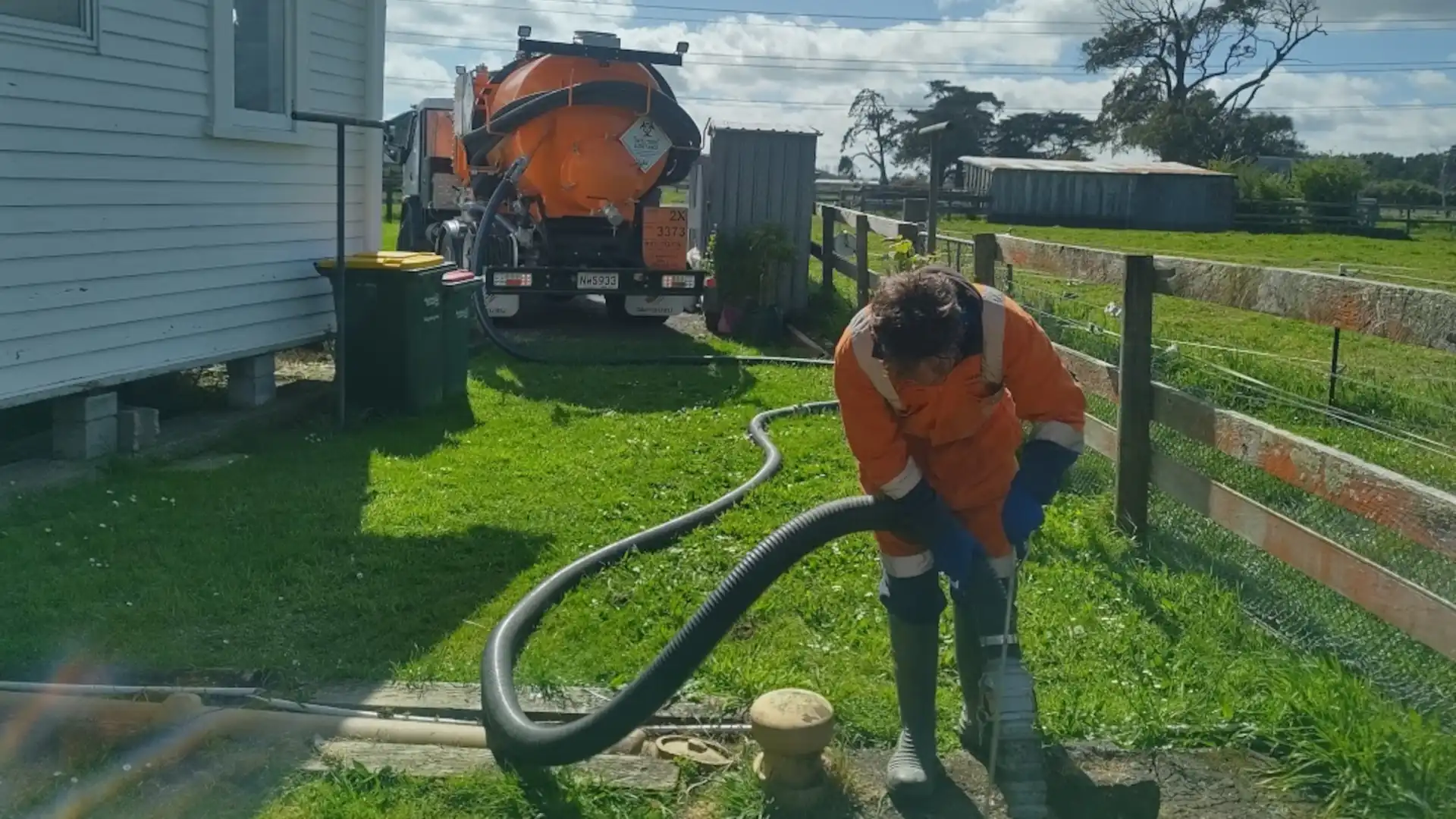Leading Industrial Wastewater Treatment Solutions: Ensuring Conformity and Performance
Leading Industrial Wastewater Treatment Solutions: Ensuring Conformity and Performance
Blog Article
Understanding the Comprehensive Refine of Fluid Garbage Disposal: Finest Practices and Environmental Effect Considerations
The administration of liquid waste disposal is a complex concern that calls for an extensive understanding of different finest methods and their connected environmental effects. From the sorts of liquid waste generated to the techniques utilized for collection, therapy, and final disposal, each action plays an essential role in safeguarding ecosystems and public health. As regulative requirements advance and innovation developments, the conversation around these procedures becomes significantly significant. What implications do these modifications hold for future sustainability efforts, and exactly how can stakeholders make certain that they are appropriately attended to?
Kinds of Liquid Waste
Recognizing the various sorts of fluid waste is crucial for effective monitoring and disposal practices. Fluid waste can be generally categorized into a number of types, each needing one-of-a-kind handling and therapy strategies.
Industrial fluid waste frequently includes harmful products, including hefty steels, solvents, and chemicals, generated throughout making procedures. These wastes require rigorous regulatory conformity to shield human health and the atmosphere. Domestic fluid waste primarily describes wastewater produced from families, consisting of sewer and greywater, which, although less toxic, can still position substantial threats if improperly managed.
Agricultural fluid waste, including drainage from farms, usually includes plant foods and pesticides that can lead to environmental degradation if not dealt with appropriately. Medical liquid waste, generated from health care facilities, includes infected fluids such as physical liquids and chemicals, calling for specialized disposal techniques to stop infection and environmental contamination.
Lastly, oil and grease waste, normally generated by restaurants and automotive industries, can create severe blockages in sewage system systems otherwise taken care of properly. Comprehending these groups promotes targeted techniques for therapy, compliance with guidelines, and reliable disposal methods, eventually advertising ecological sustainability and public health safety and security.

Collection Approaches
Effective collection approaches are important for the appropriate monitoring of liquid waste, making sure that it is collected securely and efficiently prior to treatment or disposal. Different methods are used relying on the kind of fluid waste created, the volume, and the certain characteristics of the waste.
One typical approach is the usage of committed collection storage tanks or sumps, which are created to catch fluid waste at the source. These systems typically incorporate pumps that promote the transfer of waste to bigger storage containers or therapy facilities. Additionally, mobile collection devices furnished with vacuum cleaner modern technology are employed in scenarios where waste is created intermittently or in hard-to-reach places.
For industrial setups, closed-loop systems can successfully lessen leakages and spills, allowing for the recovery and reuse of liquid waste. It is also vital to train workers on correct collection protocols to mitigate threats connected with hazardous materials.
Additionally, applying routine maintenance timetables for collection devices makes certain ideal efficiency and safety. The combination of innovative monitoring systems can improve collection performance by offering real-time data on waste degrees and prospective hazards. On the whole, effective collection techniques are fundamental to lasting fluid waste monitoring practices.
Treatment Procedures
Therapy processes play a crucial role in the management of fluid waste, changing possibly unsafe products into safe effluents or multiple-use resources - liquid waste disposal. These procedures can be broadly categorized right into physical, chemical, and organic methods, each customized to resolve particular pollutants present in the waste stream
Physical therapy approaches, such as sedimentation and filtration, job by removing suspended solids and particulate issue. These strategies are commonly the very first step in the treatment chain, effectively reducing the load on succeeding processes. Chemical therapies include the use of reagents to neutralize damaging compounds, precipitate heavy metals, or oxidize organic contaminants, thereby improving the security of the effluent.
Organic treatment processes, consisting of activated sludge systems and anaerobic food digestion, maximize the all-natural abilities of microbes to deteriorate natural matter. These approaches are specifically reliable for wastewater consisting of naturally degradable toxins. Advanced therapy modern technologies, such as membrane layer filtering and advanced oxidation processes, are progressively used to achieve greater degrees of filtration.
Incorporating a mix of these therapy techniques not only ensures conformity with governing standards however additionally advertises environmental sustainability by recovering useful sources from fluid waste.
Disposal Options
Exactly how can companies make sure the responsible and secure disposal of liquid waste? Effective disposal options are essential for securing public wellness and the environment. The key methods include land treatment, incineration, and disposal complied with by investigate this site discharge right into local wastewater systems.
Land disposal entails the careful control of fluid waste in marked land fills, making sure that it does not seep right into bordering soil or water. Incineration, on the other hand, subjects liquid waste to high temperatures, transforming it into ash and gases, which require appropriate purification to minimize emissions. This approach is ideal for contaminateds materials that can not be dealt with through conventional methods.
In instances where liquid waste can be dealt with, companies might choose for biological or chemical therapy procedures to reduce the effects of dangerous components prior to releasing the dealt with effluent right into municipal systems. This route usually aligns with governing demands, making certain that the effluent satisfies security requirements.
Eventually, organizations should conduct detailed analyses of each disposal option to determine its feasibility, considering factors such as waste structure, governing compliance, and potential threats to wellness and the atmosphere. By picking appropriate disposal approaches, services can add to an accountable waste management approach.
Ecological Impact
The environmental influence of liquid waste disposal is a vital consideration for organizations looking for to decrease their environmental impact. Furthermore, the discharge of untreated or inadequately dealt with waste into surface waters can result in eutrophication, leading to additional reading oxygen deficiency and the subsequent fatality of fish and other microorganisms.

To minimize these effects, companies should adopt best methods such as applying extensive waste treatment procedures, advertising recycling and reuse, and sticking to regulatory standards. By taking a positive approach to fluid waste monitoring, entities can considerably decrease their ecological impact while supporting lasting growth goals. Ultimately, an extensive understanding of the environmental effects related to fluid garbage disposal is essential for notified decision-making and responsible stewardship of natural resources.
Final Thought
Effective administration of liquid waste is essential for guarding environmental integrity and public health and wellness. By adopting ideal methods in disposal, collection, and treatment, together with adherence to governing criteria, the potential for unsafe contamination of ecological communities can be significantly minimized. Continuous advancements in modern technology and processes add to sustainable waste monitoring efforts. Inevitably, a detailed understanding of fluid garbage disposal why not check here not just alleviates environmental effects however also cultivates a dedication to responsible source administration and ecological stewardship.
The monitoring of liquid waste disposal is a multifaceted issue that needs a complete understanding of numerous finest techniques and their linked environmental influences. From the kinds of fluid waste produced to the approaches utilized for collection, therapy, and final disposal, each step plays a vital function in protecting ecosystems and public health.The environmental impact of fluid waste disposal is an important consideration for organizations seeking to minimize their environmental impact. Eventually, a comprehensive understanding of the environmental effects linked with fluid waste disposal is crucial for informed decision-making and responsible stewardship of natural sources.
Ultimately, a detailed understanding of fluid waste disposal not only alleviates ecological effects but additionally fosters a commitment to accountable source monitoring and environmental stewardship.
Report this page